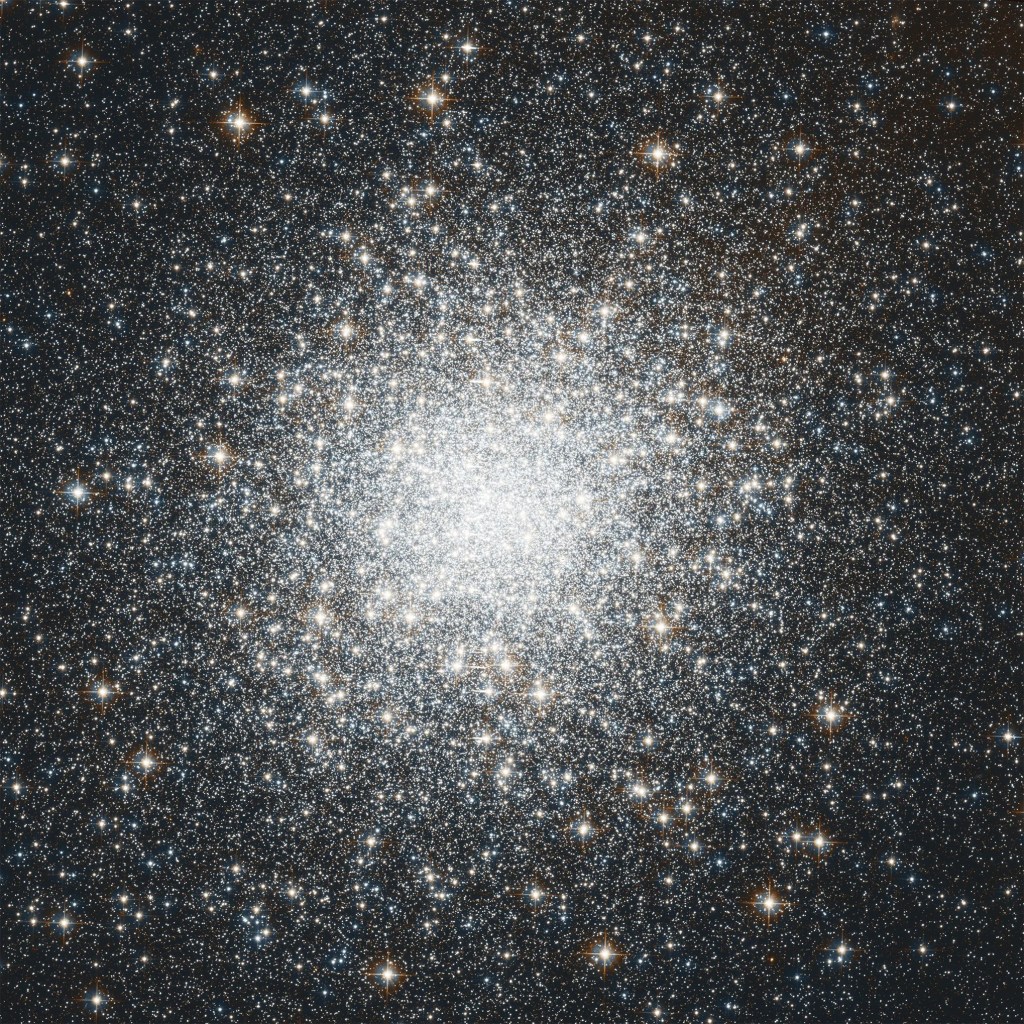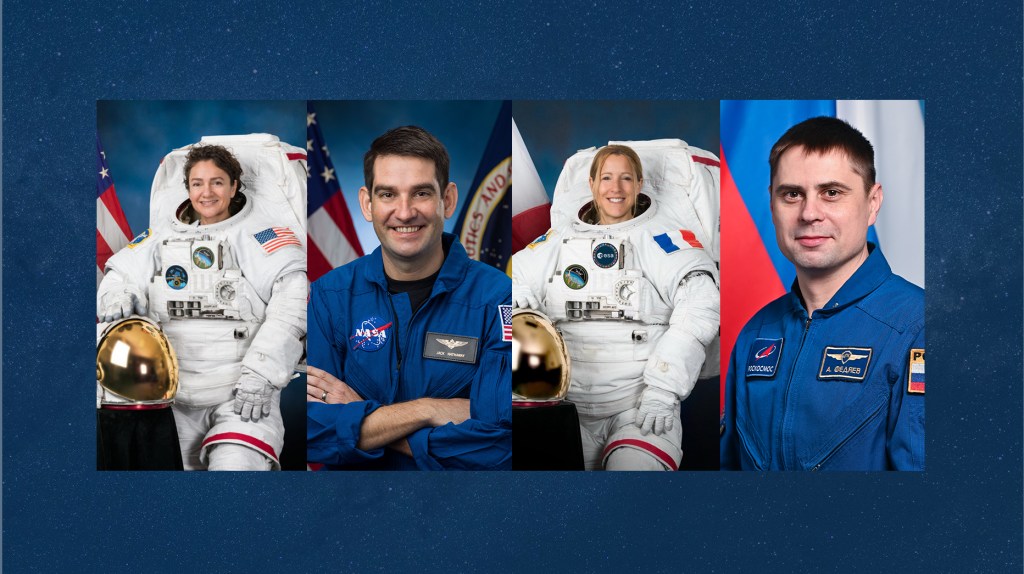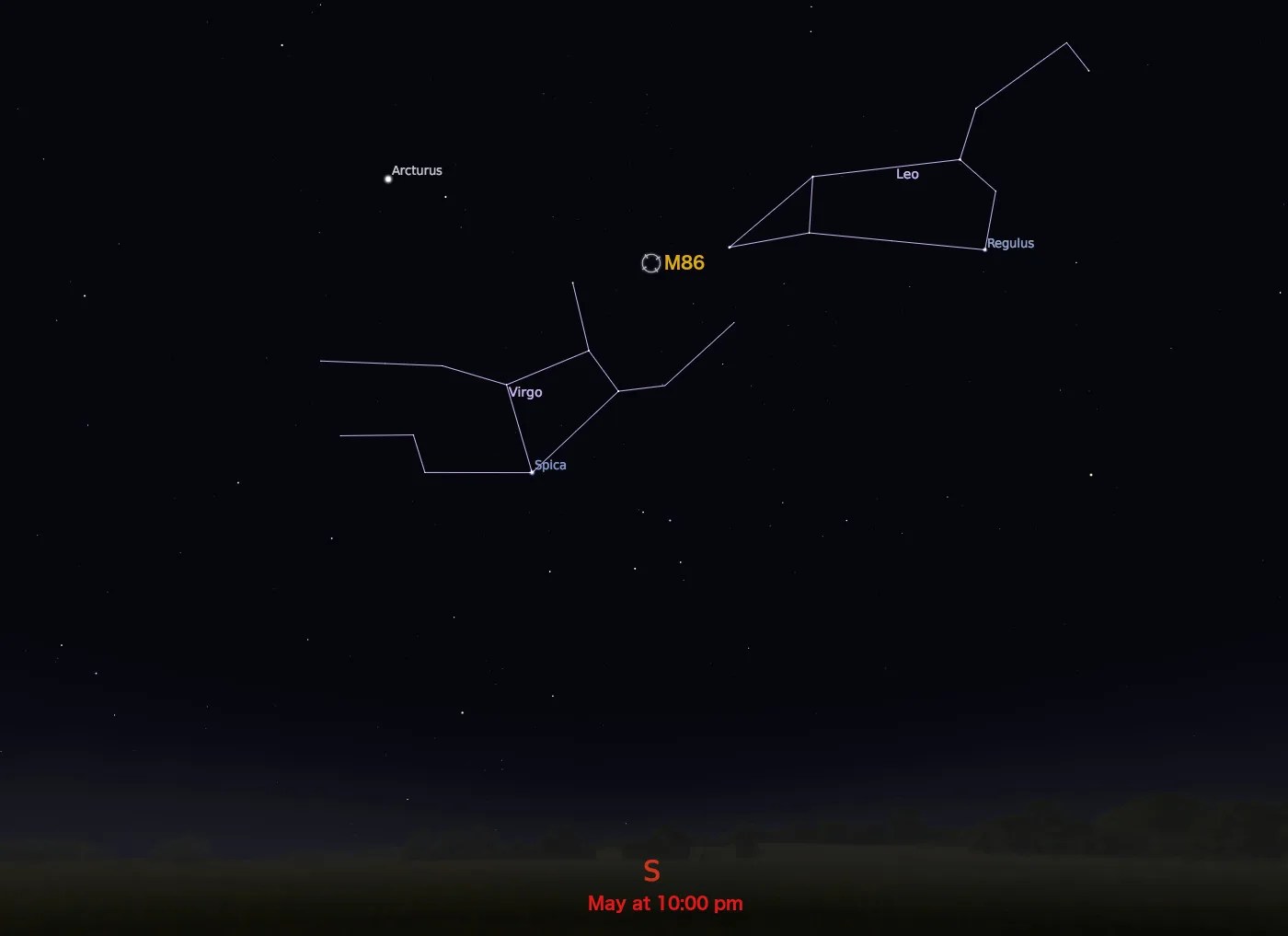Messier 86
Messier 86 is either a lenticular or elliptical galaxy that holds roughly 3,800 globular clusters.
Distance
52 million light-years
Apparent Magnitude
9.2
constellation
Virgo
object type
Galaxy
Located in the constellation Virgo, M86 is either an elliptical galaxy or a lenticular galaxy (a cross between an elliptical and spiral galaxy). This Hubble observation of M86 was taken in near-infrared and visible light using the Wide Field and Planetary Camera 2 and the Advanced Camera for Surveys. Featuring about half of the galaxy, it shows the bright central nucleus and surrounding regions of light. The image also reveals globular clusters in M86 (shown as points of light) and an edge-on galaxy (found to the lower left of M86’s core).
M86 was discovered in 1781 by Charles Messier and is one of the brightest members of the Virgo cluster of galaxies. It contains approximately 3,800 globular clusters.
While the majority of the Virgo cluster is receding from the Milky Way, M86 is getting closer to our galaxy. This is because M86 is located on the far side of the Virgo cluster from us and is moving toward the center of the cluster. Of all the galaxies in Messier’s catalog, M86 is moving the fastest in our direction but is still approximately 52 million light-years away from Earth.
The best time of the year to view M86 is during May. Having a magnitude of 9.2, M86 can be seen near fellow galaxies in the Virgo cluster with binoculars and small telescopes, with M84 often appearing alongside M86 in the field of view. Telescopes that are 8 inches or larger will reveal several other, fainter galaxies in the same field of view.
Hubble took these observations to help astronomers study the cores of early-type galaxies, which are often old elliptical or lenticular galaxies found toward the centers of galaxy clusters. By studying the cores of these galaxies, astronomers can determine their central structure and analyze both the history of the galaxy and the formation of its core.
For more information about Hubble's observations of M86, see:
Explore Hubble's Messier Catalog
The following pages contain some of Hubble’s best images of Messier objects.

Overview The Messier catalog, begun by astronomer Charles Messier in the 18th Century and revised over the years, includes some…

Better known as the Crab Nebula, Charles Messier originally mistook Messier 1 for Halley’s Comet, which inspired him to create…

Hubble's image of Messier 2 is comprised of visible and infrared wavelengths of light.





































